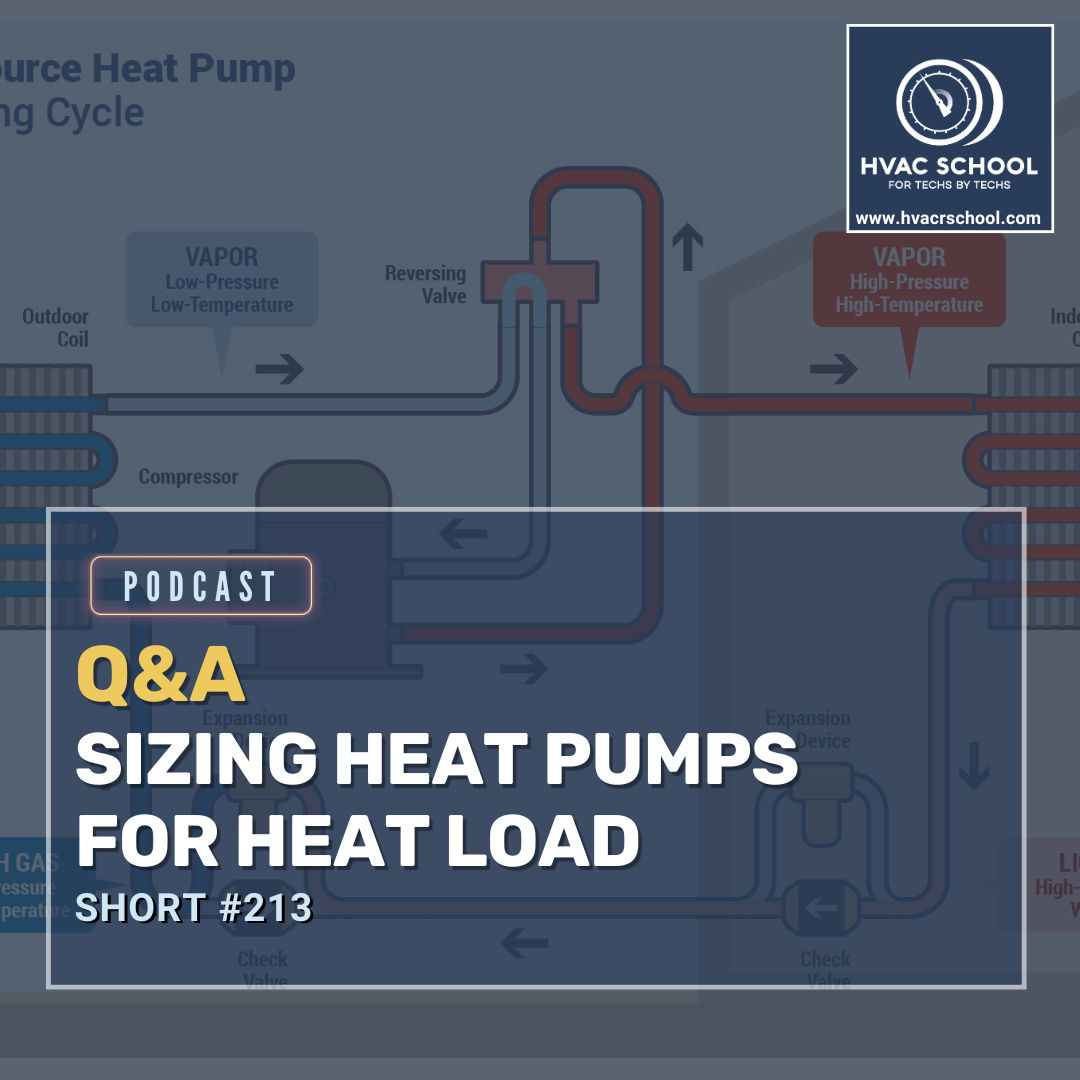Q&A – Sizing Heat Pumps for Heat Load – Short #213

In this short Q&A podcast, Bryan answers a listener-submitted question about sizing heat pumps for heat load in heating mode, something that we haven't talked much about in the past due to the greater need for cooling in our market.
In most cases across the country, a heat pump's heating loads will be greater than the cooling loads. There is a greater swing between the desired temperature and the actual temperature in heating mode than in cooling mode (in terms of sensible BTUs). We don't want to oversize for cooling because of its lower efficiency, comfort, and humidity control due to the shorter runtimes. (However, oversizing for cooling loads is far less of an issue in arid climates.)
We don't want to oversize the heat pump to meet the heating load when we'll far exceed the cooling load. However, that's not much of a concern for the opposite scenario in which we oversize for heating to meet the cooling load. We can add auxiliary heat, such as electrical heat or natural gas in dual fuel setups, to help us meet the heating load; we don't have those same options in cooling. Variable-capacity systems can also be beneficial in scenarios where heating and cooling loads are massively different.
Bryan is excited about future opportunities for standby cooling and heating capacity, such as in the case of a heat pump heat recovery chiller system with buffer tanks. In the meantime, we have to design for vastly different heating and cooling loads and may have to oversize for one or the other.
Have a question that you want us to answer on the podcast? Submit your questions at https://www.speakpipe.com/hvacschool.
Purchase your tickets or learn more about the 6th Annual HVACR Training Symposium at https://hvacrschool.com/symposium.
Subscribe to our podcast on your iPhone or Android.
Subscribe to our YouTube channel.
Check out our handy calculators here or on the HVAC School Mobile App for Apple and Android.
Author:









Comments
To leave a comment, you need to log in.
Log In